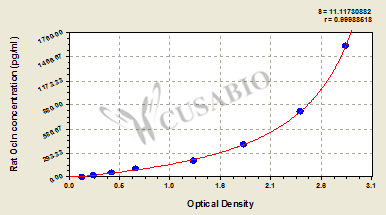Occludin is a transmembrane protein that maintains tight junction integrity in epithelial and endothelial cells. This protein regulates paracellular permeability and maintains barrier function across tissues, including the blood-brain barrier, intestinal epithelium, and vascular endothelium. When occludin expression and localization become dysregulated, this contributes to inflammatory diseases, cancer metastasis, and barrier dysfunction disorders. These connections make occludin an important target for biomedical research.
The Rat Occludin ELISA kit (CSB-E17291r) is a quantitative sandwich immunoassay designed for measuring occludin levels in rat samples. This kit accommodates multiple sample types including serum, plasma, tissue homogenates, and cell lysates, with a detection range of 25 pg/mL to 1600 pg/mL and a sensitivity of 6.25 pg/mL. The assay requires 50-100 μL sample volume, operates at a detection wavelength of 450 nm, and can be completed within 1-5 hours.
Application Examples
Note: The following application examples are drawn from a selection of publications citing this product. For additional applications, please refer to the full list of references in the "Citations" section.
Researchers have used this ELISA kit to study tight junction protein integrity and barrier function in various pathological conditions. Studies have applied the kit to measure occludin levels in tissue homogenates, plasma, and cerebrospinal fluid samples from animal models, particularly in gastrointestinal and neurological research.
• Gastrointestinal barrier research: Measuring tight junction protein levels in colon tissue homogenates to evaluate intestinal barrier integrity and permeability changes
• Neurological injury studies: Quantifying occludin concentrations in both plasma and cerebrospinal fluid following germinal matrix hemorrhage in animal models to assess blood-brain barrier disruption
• Tissue barrier function: Studying tight junction protein expression as biomarkers of epithelial and endothelial barrier compromise across different organ systems
• Comparative biomarker analysis: Measuring occludin levels alongside other tight junction proteins to comprehensively assess barrier function in disease models




